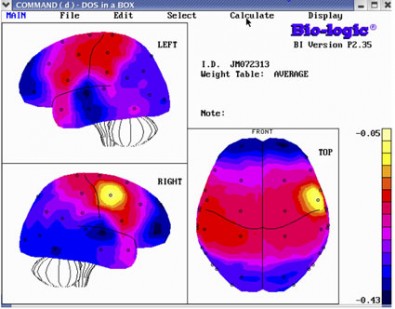
Evidence of John McCluskey’s brain abnormalities presented by his defense team. Blue areas represent larger deviations from normal. PACER
John McCluskey escaped from an Arizona prison in July, 2010. A few days later, he and two accomplices — one of whom was both his cousin and fiancee – carjacked Linda and Gary Haas, a vacationing Oklahoma couple in their 60s. McCluskey shot the Haases inside the camping trailer they were towing behind their truck, and set the trailer on fire with their bodies still inside. McCluskey was convicted for the carjacking and two murders in federal court on Oct. 7.
Yesterday the jury charged with deciding his sentence announced that it had been unable to come to a unanimous decision on the death penalty. That means he’ll get life without parole.
Perhaps it’s little wonder the jury couldn’t agree — they’d been given a lot to consider. McCluskey’s defense team had tried to convince them that he has several brain defects that, combined with other factors, contributed to his crimes and should be considered mitigating circumstances. The defense presented the results of several types of brain scans and various psychological tests, as well as testimony from neurologists and other experts.
Read the full article at WIRED magazine. December 12, 2013. By Greg Miller.



